Get Out 2017
A film text produced and distributed in 2017 that represents the ideology of Race in America.
Chris (Daniel Kaluuya) and his girlfriend, Rose (Allison Williams), have reached the meet-the-parents milestone of dating, she invites him for a weekend getaway upstate with Missy and Dean. At first, Chris reads the family’s overly accommodating behaviour as nervous attempts to deal with their daughter’s interracial relationship, but as the weekend progresses, a series of increasingly disturbing discoveries lead him to a truth that he never could have imagined.
Mise-En-Scene
Rose keeps her white milk seperate to her coloured cereal
Get Out, uses props as a component of Mise-En-Scene to reveal the ideology of race to its audience. Here is an example of this. Rose keeps her white milk seperate to her coloured cereal. This is an intentional frame that Director Jordan Peele reveals to the audience. The close up of the coloured Fruitloops and glass of white milk allows the audience to see that Rose’s character has the ability to keep these things seperate. She then takes a sip of the milk through a black straw, another example of the implied ideology of race. Audience’s gather their thoughts around this and come to the conclusion that America, may still be divided by colour and that race is still an active part of their cultural landscape.
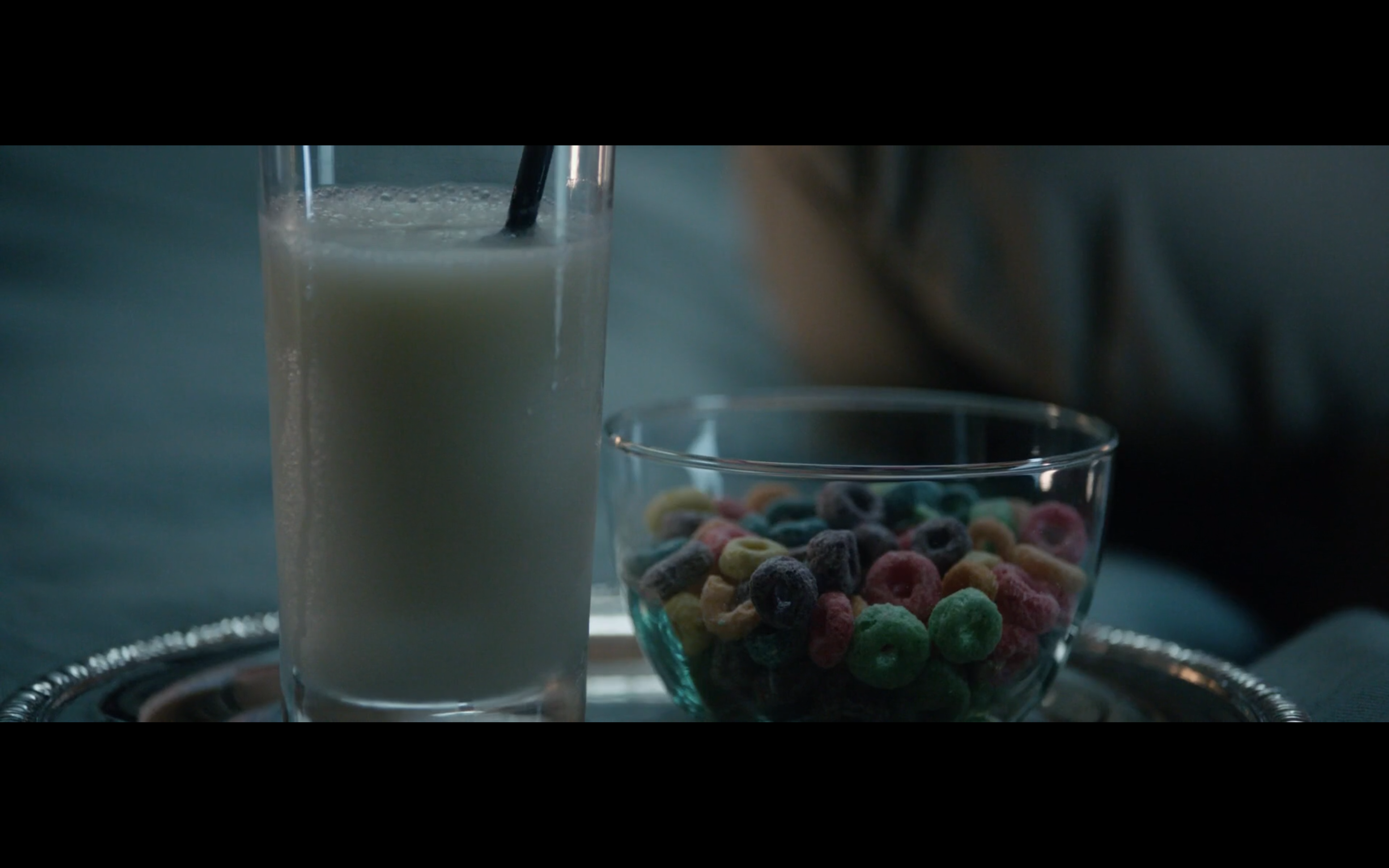
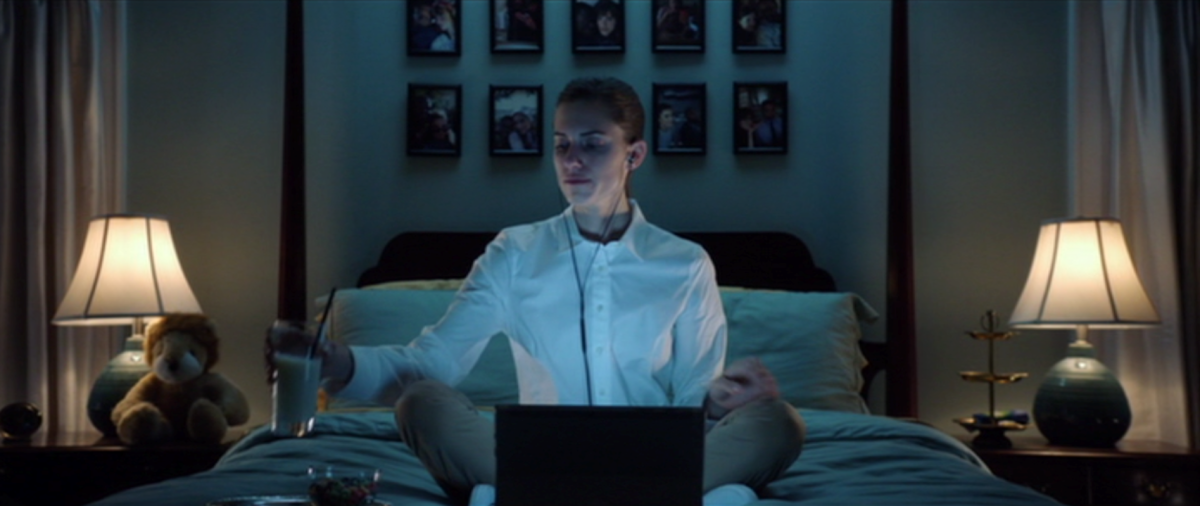
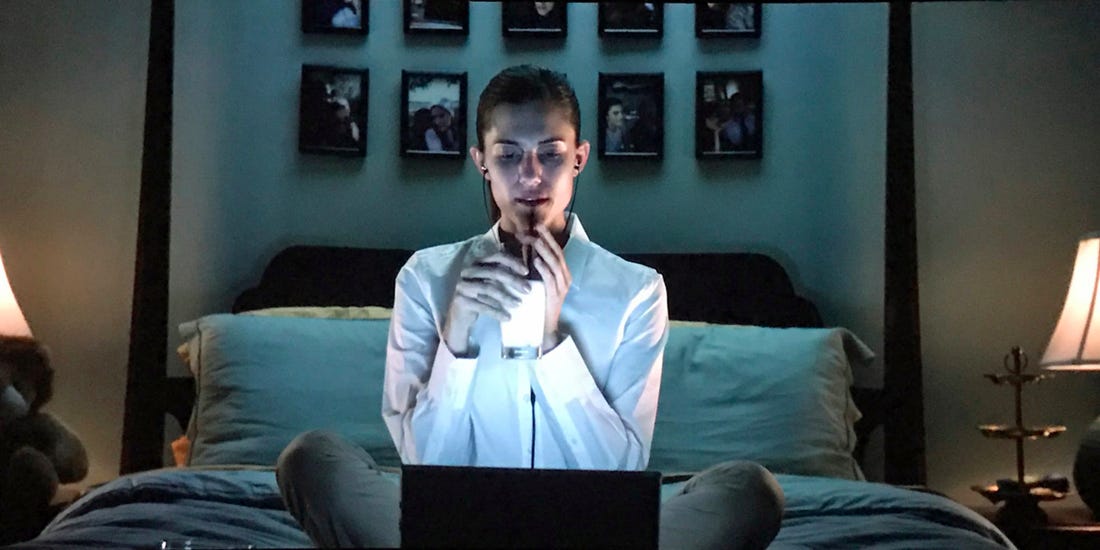
How Costume in Get Out helped tell the story
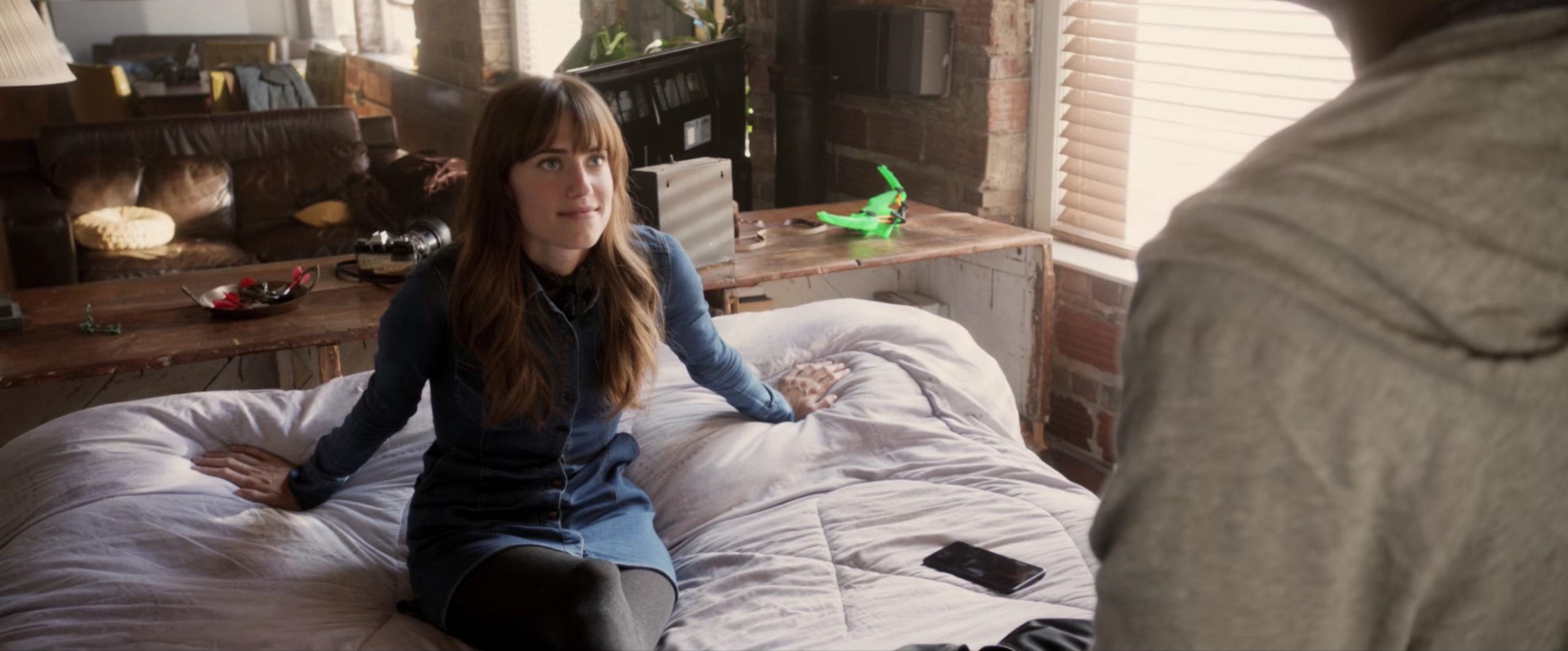
The All-American Girl
Rose played by, Allison William’s reflected a typical preppy, slightly naive American girl. Costume designer Nadine Haders wanted to make Rose look young and give her an easy-going, effortless vibe. She wanted her character to come across to the audience as approachable and couldn’t be thought of as strange like the rest of the characters appeared at first site. The first time Rose is introduced to the audience she’s in a denim dress and this was very purposeful. Denim represents the All-American girl. In fact for most of the film both Rose and Chris are portrayed to the audience as the All-American couple, constantly being seen by the audience wearing a combination of red, white and blue colour schemes.

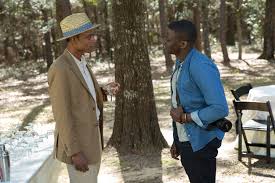
Red was a very important colour in the film because it is symbolic of secret societies.
All of the Armitages and their guests wear red, which is a symbol of their secret society. Red, of course, is associated with blood, and they don’t mind spilling lots of it to get what they want. Chris, however, wears no red whatsoever and this is one of the things that marks him as an outsider.
The scene at the family gathering we see the motif of the colour red being a representative of the hidden society. Everyone at the party is wearing something red, while Chris is wearing blue. This represented his status as an outsider and the ‘us verses them’ mentality.

The colour BROWN
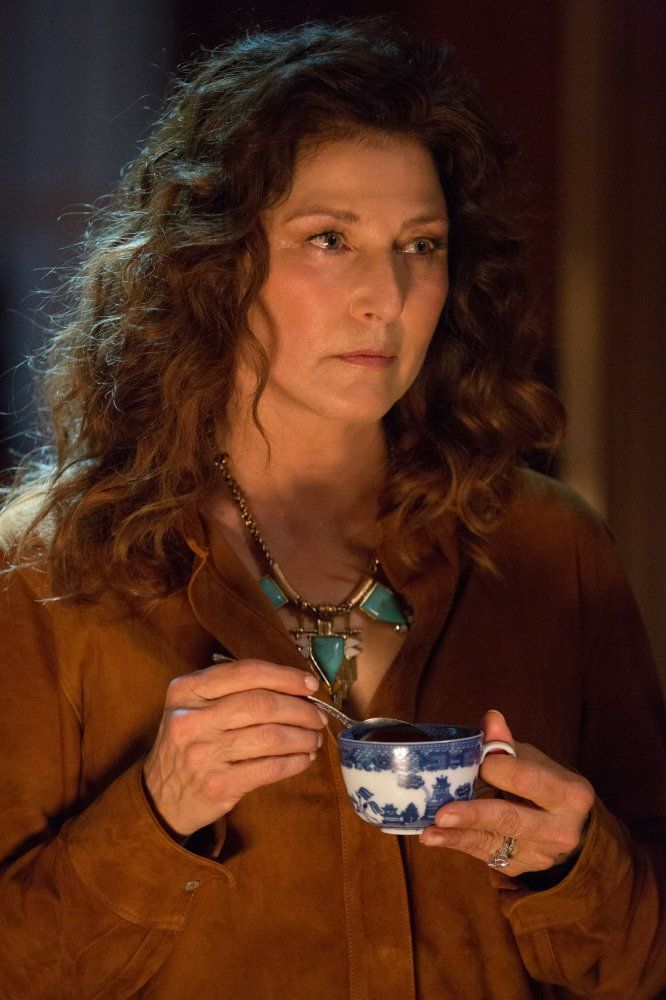
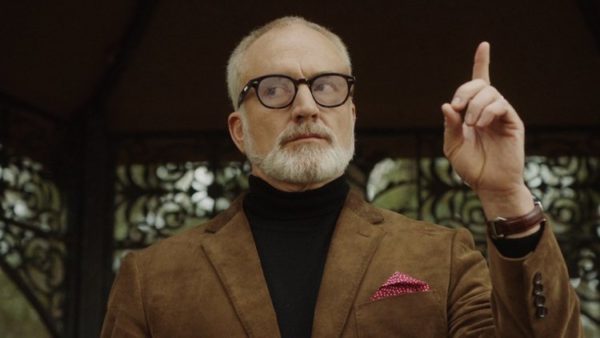
How the colour brown was employed in Get Out to help tell the story
Audience’s are exposed to the colour brown at various times through out the narrative. The colour brown represents earth and grounded nature. When we are introduced to characters wearing brown we the audience are meant to fill a sense of being grounded by nature. Perhaps a reason why costume designer Nadine Haders has both Rose’s parents wearing brown in climatic scenes in the text. This can amplify conflicted attitudes from the audience and ensure they align with the Horror genre.
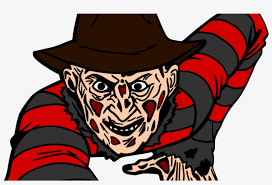
The stripped jumper: Freddy Krueger reference
Horror fans will notice that the sweater worn by Rose makes a subliminal reference to the 1984 film, Nightmare on Elm Street. The stripped sweater worn by Freddy Krueger scared audiences for years. To this day audiences whom are passionate about the Horror genre will make a cultural reference to this costume motif.
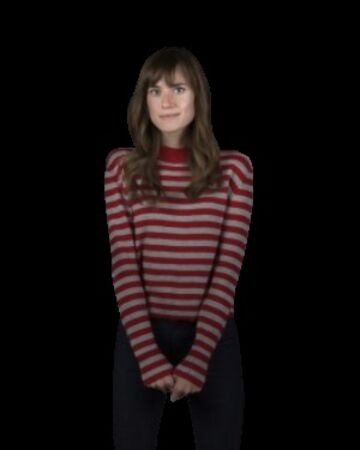
How Sound and Score made an impact in Get Out
The Scores main title:
So the main title is called Sikiliza Kwa Wahenga. That means “Listen to the elders” in Swahili. The voices are meant to represent the departed slaves and lynching victims. They are trying to reach Chris, the lead character, and speak to him from beyond. The use of Swahili is so we hear an African language in their tone yet we don’t hear the exact words they’re saying because the dead speak to us through imagery and emotion.
The film had them say things in Swahili that they would be saying if they were trying to warn him. That’s what the phrases are. The translation is, “Brother, run! Listen to the elders! Listen to the truth! Run away! Save yourself!”
Sikiliza Kwa Wahenga - Main Title in Get Out
Opening Scene in Get Out
Unsettling words….in the Lyrics
The rabbit represents black people persecuted by the farmer, the allegorical white race. This foreshadows that the Armitage family will try and catch Chris. The metaphor of Chris as the rabbit is strengthened by the fact that the Armitage’s serve a carrot-based dessert, carrot cake to Chris on his first visit to the house. Chris’s desperate flee from the house at the resolution of the narrative parallels the rabbit’s flee from the farmer.
SCORE: By Michael Abeds
Opening scene song: “Run Rabbit Run” is a song written by Noel Gay and Ralph Butler.
Lyrics:
- On the farm, every Friday
- On the farm, it’s rabbit pie day.
- So, every Friday that ever comes along,
- I get up early and sing this little song
- Run rabbit – run rabbit – Run! Run! Run!
- Run rabbit – run rabbit – Run! Run! Run!
- Bang! Bang! Bang! Bang!
- Goes the farmer’s gun.
- Run, rabbit, run, rabbit, run.
- Run rabbit – run rabbit – Run! Run! Run!
- Don’t give the farmer his fun! Fun! Fun!
- He’ll get by
- Without his rabbit pie
- So run rabbit – run rabbit – Run! Run! Run!
Exam & SAC Question: Sound & Camera working together
Explain how two media codes and/or conventions work together to engage an audience in one media narrative that you have studied this year.
7 marks
Film texts rely on code and conventions to work together to convey their narrative and enhance the genre. Get Out (2017) uses sound and camera techniques to engage their audience by eliciting fear and trepidation, a common ingredient of the Horror genre.
In the scene where Jeremy plays the ukulele, the eerie score has been composed with minor tonality. This provides the audience with an imminent threat notion. Foreshadowing the fearful threat that is to come in the following scene. This Score alongside a wide camera angle, provides audiences with knowledge on where this threat will take place. The wide angle indicated a large family home, where Chris’s character will find his fate. The camera then pans to close up’s on family members, foreshadowing whom Chris will fall victim too.
In the opening scene the audience can hear the song, ‘Run rabbit run’ working with a long panning shot. The Score written by Michael Abeds, allows audiences to feel a sense of fear immediately as the film opens. The song has unsettling lyrics about the existence of slavery. Director Peel uses a long tracking shot that follows a black character walking along a poorly lit street at night. This alongside the camera technique is where the audience can hear the song, Run rabbit run, playing from a car that seems to be approaching this character, ensuring the audience anticipate imminent threat once again.
Peel was effective in having these two codes working together to consistently and explicitly convey the genre Horror. Audience expectations are met in the opening, developing and resolution of the narrative.
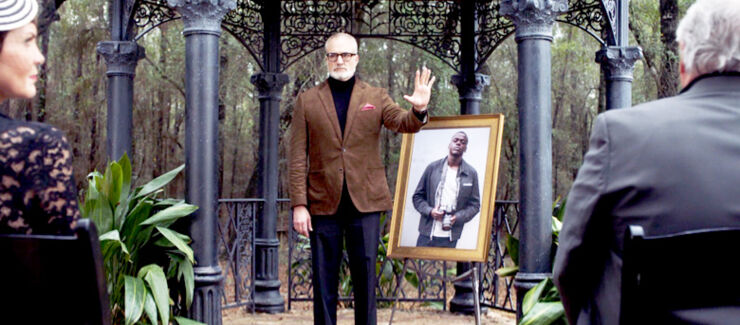
The Bingo Game
Jordan Peele turned what looked like an innocent game of silent bingo in something malevolent. The Bingo Game at the party represented something very similar to how slave auctions were conducted in 1859. Audiences later discover that the silent Bingo Game was in fact a bidding war for the film’s protagonist Chris.
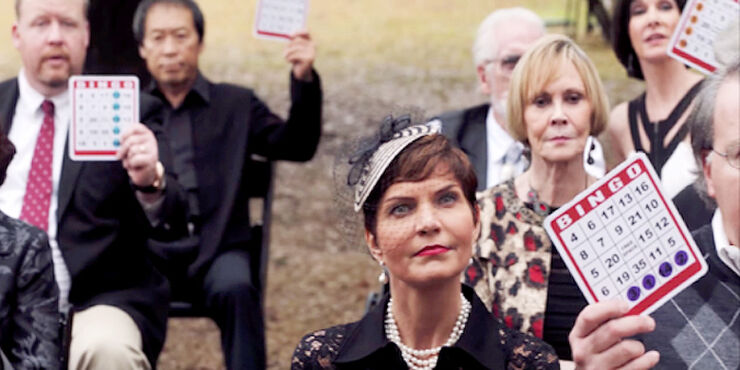
Explain how two media codes and or/conventions work together to engage an audience in one media narrative that you have studied this year.
7 marks
Jordan Peele uses a combination of mise-en-scene and sound design in order to take advantage of viewer expectations and eventually shock them. The music throughout Get Out forebodes the horror and danger that is often foreshadowed throughout the narrative. In the opening scene, Flanagen and Allen’s, ‘Run Rabbit Run’, plays eerily, foreshadowing through its lyrics what will eventually transpire. ‘Bang bang bang goes the farmers gun….run rabbit run”, makes reference to how protagonist Chris is symbolically the rabbit and how he is literally chased off the Armitage’s property by the end of the film. The song almost warns audiences of the danger that Chris will ultimately encounter.
Shortly after the opening scene the music cuts and switches to Childish Gambino’s 2016 single, ‘Realbone’. The songs chores, again used to foreshadow how Chris must be alert and ‘stay awake’ as antagonists will eventually lead him to his demise. Upon the initial viewing, audiences only hear the Score without understanding Peele’s intention. However, due to the combination of mise-en-scene working alongside the Score audiences gain further insight into the danger to which the lyrics present. An obvious example of these techniques working together is represented to audiences in, ‘The Bingo Scene’.
The Bingo Scene is a representation of African Slavery during the 1850’s – 1862. Peel uses setting, props, position of characters and intentional sound drop-outs to reflect the silent Bingo taking place. This provides audiences with a notion of threat and angst. Having no sound with strong visual elements all working together ensures the audience are apart of such an irrational and intense moment within the narrative.
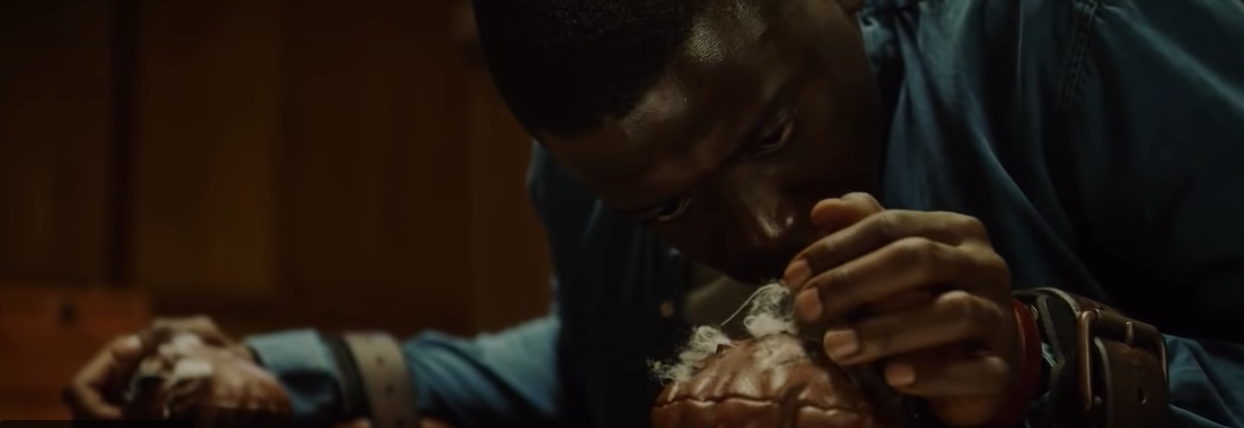
Was cotton an intended symbol?
As Chris is tied up in the basement and under hypnosis, he gets an idea from a rip in the arm of the leather chair. He pulls out the cotton and carefully studies this material. A closeup and extended shot allows the audience to see exactly what Chris is thinking. Little do they know he will stuff this in his ears to prevent him from hearing the tap of the tea cup. The ‘cotton’ symbol did not get lost on viewers as the irony of this particular material represents the ideology of race. This might be the only time where a Black man picking cotton has been a lifesaving task.
Silver spoon and Tea Cup motif
The tea cup and spoon is the object Rose’s mother Missy uses to hypnotise Chris. Audiences recognise the ‘silver spoon’ as a figure of speech to describe being born with privilege.
However, the casual stirring of the silver spoon in a tea cup not only develops into a centrifugal force of terror but bears important symbolic meaning. For one, the teacup is symbolic in that during the U.S. slavery era, white wives of slave owners would use a gentle strike to their teacup to summon house slaves.
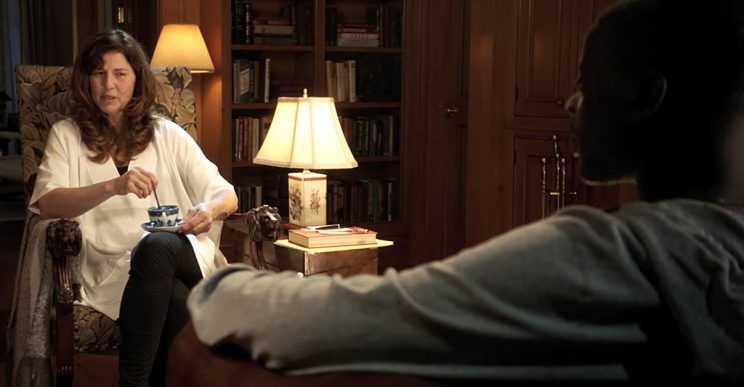
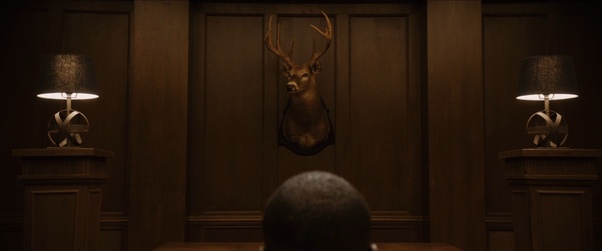

Deer motif
The deer shows up multiple times in the social thriller as a metaphor for modern-day racism. For example, it’s on the wall of Rose’s (Allison Williams) parents’ home, where she’s just brought her boyfriend, Chris (Daniel Kaluuya), for the weekend. A deer also appears in the first moments of Chris’ first trip to the “Sunken Place” while being hypnotized by Rose’s mother.
There is a whole dynamic and parallel in Get Out between the deer, Chris and Chris’ mom etc. Get out was written so brilliantly that there are multiple layers to each metaphor.
Additionally, the deer that hung above Chris’ head looks like a hunted trophy which shows how the family sees the black people they kidnapped, merely as trophies. However, the fact that it hung above him could also symbolise white dominance.
It is very ironic that Dean was killed by this buck. The very thing which represented his hate for African Americans was the object that killed him.
Exam & SAC Response: 10 mark question
Media narratives implicitly or explicitly comment on, reflect on, develop, reject or ignore ideologies.
Analyse the ways in which a media narrative that you have studied this year is shaped by ideology. Use the characteristics and/or construction of your selected media narrative to support your response.
10 marks
Jordan Peel’s 2017 film text, Get Out follows the construction of a three-act structure. The narrative contains a beginning, middle and end to emphasis and install the ideology of systemic racism. Peel’s film employs an implied ideology of race and presidency election, as it reveals to the audience a perspective following the Trump leadership and election into power in 2017. The year the text was released American’s were witnessing the new leadership which once belonged to the first African American President, Barack Obama.
Peel shapes his film around the ideology of systemic racism in the form of a Horror genre. By doing this it diminishes the stigma and ignorance around the eradication of discrimination, highlighting that it still prevails in the fabric of U.S soil. The Horror genre instils fear and allows the audience to unpack the implied and at times the explicit ideology of race. This is done through point of view of Chris’s character. More often than not the audience is positioned to sympathise with his situation and endure the discrimination placed against him.
Peel implicitly and explicitly uses symbolism to build and create meaning that links to the ideology of race. The audience is introduced to this characteristic early on in the narrative. In the opening scene, after the audience are exposed to a car crash, they notice that Peel positions a Police Office directly in the frame along with Chris’s character. This leaves the audience questioning why would he be integrated when he wasn’t behind the wheel? This then foreshadows to the audience their first look at systemic racism that will be a repeated theme throughout the narrative.
In the final act the audience once again are exposed to a narrative possibility involving Chris’s character and a Police Officer. The audience expects the conclusion of the narrative to be an injustice scenario for the coloured character. This would then perpetuate and conclude the major theme of race to the audience. However, when this doesn’t happen the audience is left questioning how they feel about the narrative. This allows the text to both reflect and reject the ideology of systemic race in America.
Symmetry in film
Using Symmetry in Set Design
Symmetry in design refers to the arrangement of the elements on a page that are equal to each other on both sides. Symmetry in film is a very complex and counterintuitive technique. The question that most commonly arises is, ‘how can a frame that has perfect bilateral symmetry create such a sense of unease?’ Surely a frame that is ordered in dimensional ratios would create, at least psychologically speaking, an aura of natural equilibrium. Director Stanley Kubrick was well known for his use of Symmetry in Film. Kubrick understood that by using Symmetry as a technique it would allow his audience to have a distressing effect on their mind.
There are two types of Symmetry used in film: Axial Symmetry & Translational Symmetry.
Axial Symmetry = Objects mirroring each other. Creating a balance in the composition of the shot. Aesthetically pleasing for the audience. Creates an effect on the eye where the focus is on one subject.
Translational Symmetry = Where the subject or object is repeated in the frame to have the eye focus on multiple subjects at once.
Axial Symmetry
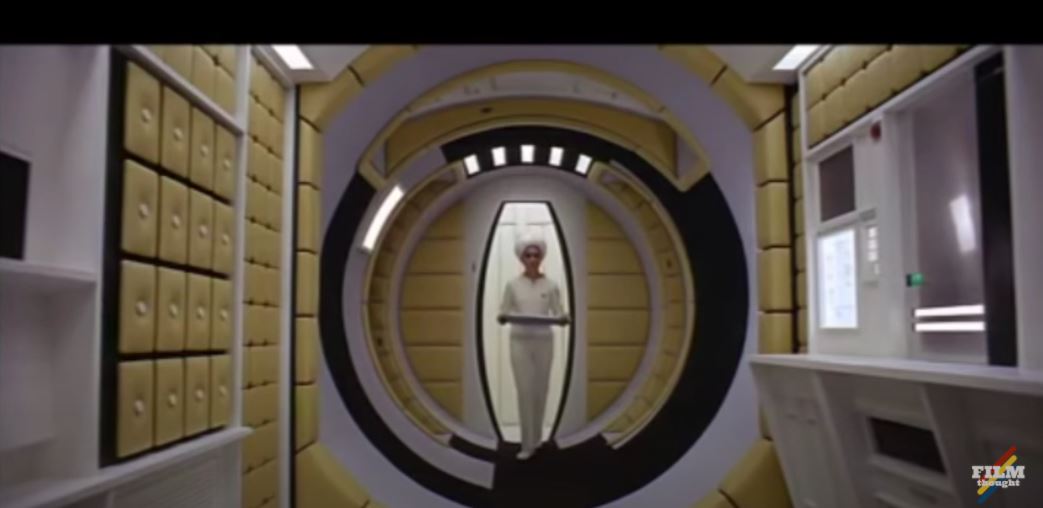
Translational Symmetry
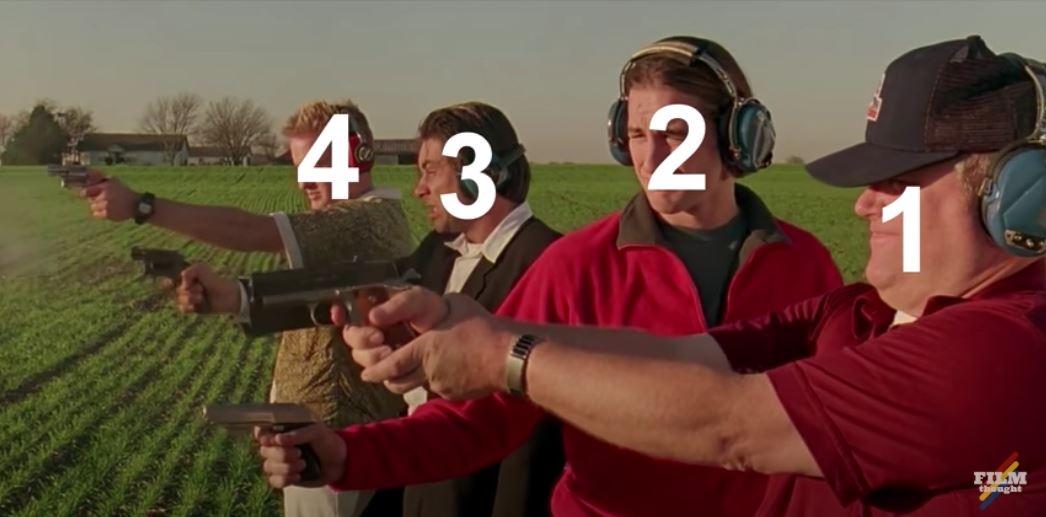

Example from Get Out
This is an example of where Peel uses Axial Symmetry in Get Out. He does this to create a disturbing effect on the audience.
Inspired by Stanley Kubrick Films
Describe the construction of one narrative you studied.
3 marks
Jordan Peele’s ‘Get Out’ is said to heavily be inspired by Stanley Kubrick’s films. Peele stated that he studied Kubrick’s films in the lead up to creating Get Out in particular, ‘The Shinning’. His inspiration from Kubrick’s work can be seen through the use of symmetrical visual references, similar to those used in The Shinning or 2001: A Space Odyssey. The constant use of symmetry alludes to madness and insanity, as well as external tidiness juxtaposed with internal evil. Symbolically referencing the film Get Out’s ideology of post-racist US.
Question on Characteristic
Describe a characteristic used in media products.
3 marks
A characteristic employed in the moving image is the use of Symmetry. Symmetry in set design is a technique employed to evoke tension, humour, anxiety and equilibrium for the audience. Humans love a sense of balance, however when used to create fear and tension it can be effective in particular genres such as; Horror and Psychological Thrillers.
Alternate Ending
Alternate Ending
Time periods question:
Explain how audiences from different time periods may have consumed OR read one of the narratives you studied.
4 marks
Get Out, directed by Jordan Peele, was written and constructed in the time period when Barack Obama was in presidency. When the text was released and distributed in 2017 the United States had inducted Donald Trump into Presidency. Peele had already re-written and filmed the ending and made the decision to use an alternate ending to ensure the ideology and themes of race and injustice were read by audiences of that time period. Had Peele released this text at a contemporary time, audiences would almost expect the alternate, deleted ending to be included. This is due to the fact, that we are now living in a time period where the #blacklivematter movement is layered in the fabric of the United States. Audiences are reading narratives with the lens of racial injustice and they would have aligned with the main character’s fate of jail time. Instead when the text was released, Peele went with the ending of having the African American character leave as the hero in the story arc.
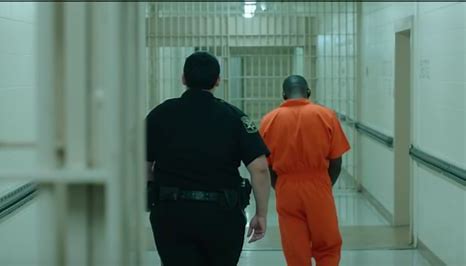
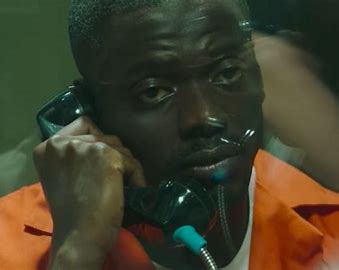
The characteristic and construction of a media narrative are dependent on its media form. Describe one characteristic of a media narrative in a media form that you have studied this year.
Media narrative: Get Out
Media Form: Moving Image
A characteristic used in the film text, Get Out is foreshadowing. Jordan Peele uses this technique in the Opening, Development and Resolution of his narrative. He allows the audience to be exposed to plot points, that reveal the future fate of his characters. Peele often uses foreshadowing as a motif in his film. Each scene is littered with a hint of what is to come. Often it is not until the audience are exposed to a second viewing that the foreshadowing reveals are uncovered.
Visual medium of storytelling: Using Semiotics ‘the study of signs’
Social norms: The standards by which behaviour is judged in a social group; the way the members of a group are expected to think, feel or act. Social norms determine to a large extent whether we feel that our attitudes are sound and our actions appropriate.
Social norms and expectations change and evolve depending on where you grew up and when you grew up. Therefore, social norms, behaviours, values and beliefs are highly considered in the construction and distribution of media texts.
Using SEMIOTICS (the study of signs) in media texts: Creators of media texts will adapt a formula, using semiotics to ensure the social norms help propel their narrative. This is the subconscious visual medium of storytelling we often receive as the audience.
An example of this is using Costume & Colour to provide audiences with a visual representation of social norms. Having girls wearing pink and boys wearing blue. Or Character & Setting. Having the female characters at home looking after the children and having the men set at their workplace. This however is an example of how social values have changed and depending on where and when your narrative is set may have these character roles in a reversed situation.
Different time periods question:
Explain how audiences from different periods of time may have consumed or read one of the narratives you studied.
5 marks
Get Out’s controversial message that racism exists casually and frequently in real life would be interpreted very differently if the film was released in 2020 rather than 2017. 2020 saw the death of African American George Floyd, who was unfairly, publicly and brutally murdered by white police officers. Floyd’s death went viral online and caused an outrage amongst the Black, Latino and Native American communities. Protests began calling for justice and police accountability, however these protests quickly turned to riots which spread around the U.S. Get Out’s central theme of racial inequity in modern society would have surely led to further outrage and anger from these minority communities. Likewise, if Get Out was released in 2020, we would see a similar outpouring of that in 1950; The Civil Rights Movement. This movement was so charged that it was able to eliminate black slavery in the United Sates. The distribution and release date of texts with strong themes and ideologies are often questioned and debated due to the social norms that exist in the time period and society the text was consumed and read.
Foreshadowing in the opening scene

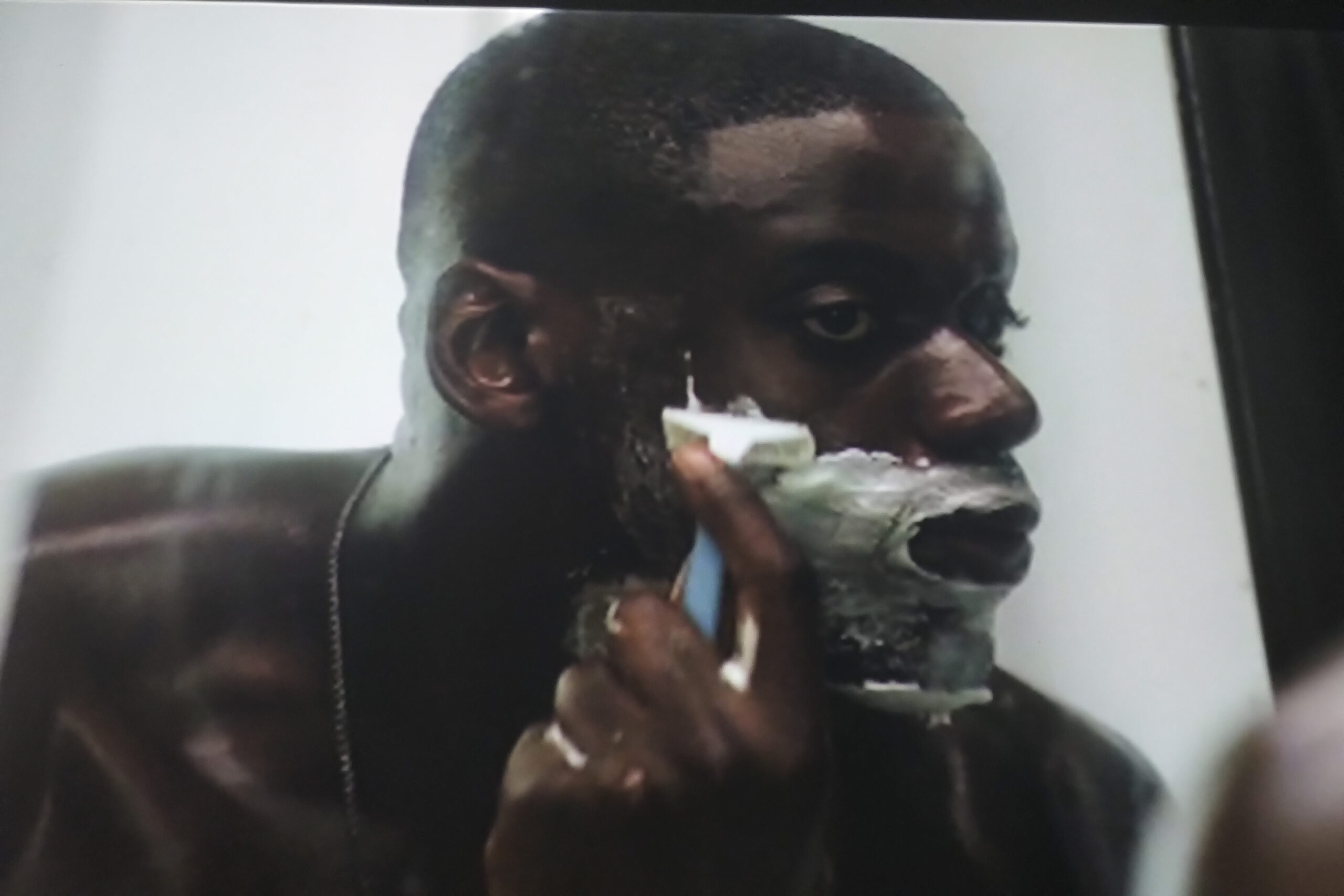
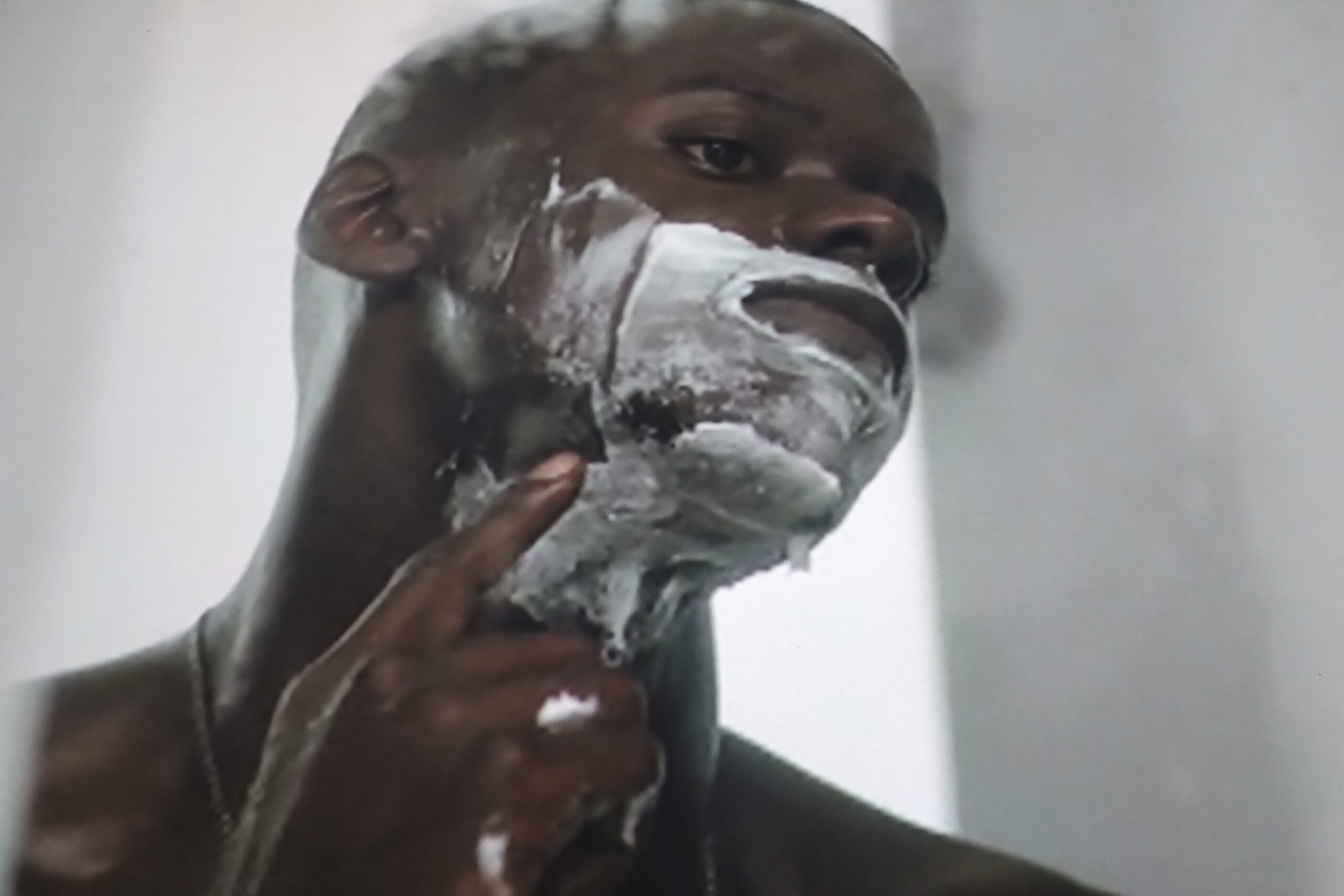
How the above images represent Foreshadowing in the opening scene
The characteristic of Foreshadowing is often employed in the Moving Image to represent events that will take place in the future. It is a technique that film makers enjoy using to help propel the narrative and provide audience with expectation and clues for future plot twists.
In the text, Get Out, the audience are introduced to Chris in his apartment, shaving his face. We see from the above images that Chris is applying white shaving cream over his face and then accidently cuts his face. Chris even points to the cut so the audience get a good still image of what has happened. This use of Foreshadowing provides audiences with events that will take place in the closure of the narrative. Although subtle, it is only when we watch the text for the second time that the audience are aware of this clue.